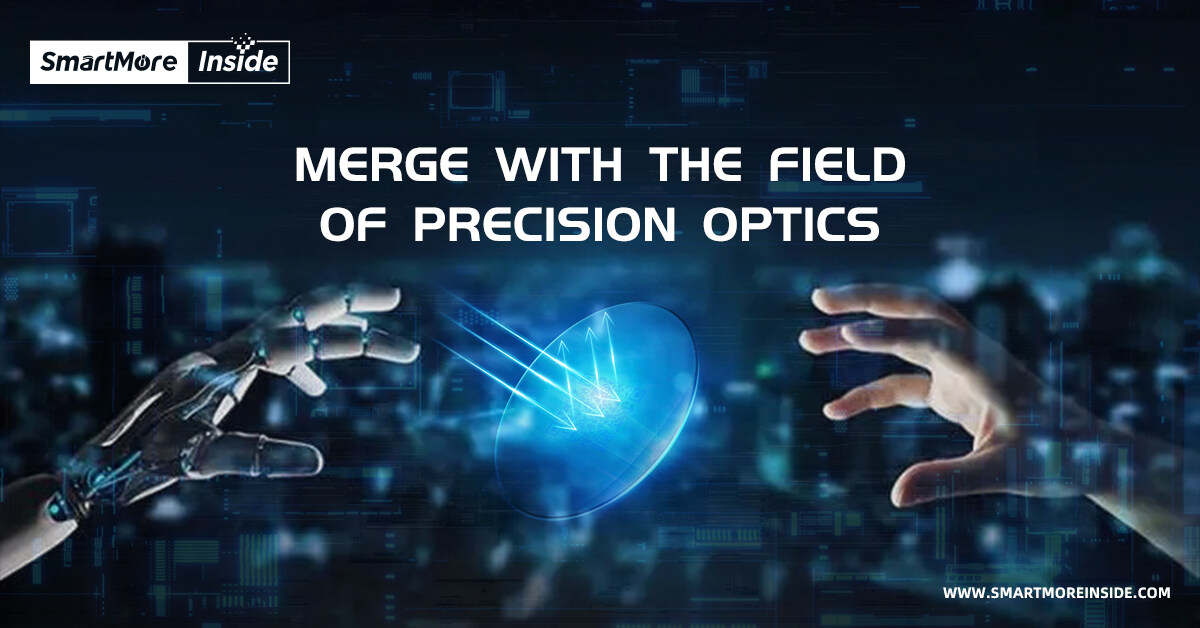


It's not much of an up-and-down story, to put it mildly.
The first contract SmartMore has won in the field of precision optics came from a partnership with a long-established, leading global optics manufacturer. The task was to design an Enigma Reading Machine that could precisely locate and read the invisible QR codes on the lenses of different prescriptions. The purpose is to install the machine on the optical manufacturer's production line so that they could control the quality of the lenses during the whole production process and realize the anti-counterfeiting function.
SmartMore won a fierce competition to grasp this opportunity, the team was thrilled and they knew it was the time to shake things up. However, like the old saying goes,”as the ideal is rich, the reality is bleak”. They soon found out that things were not that simple.
The QR code can be perceived as a "normal" QR code, except that it consists of 0.125 mm dot matrix, the carrier is a curved lens blanks (the raw material of the myopic lenses), and it is invisible to the human eye. As a consequence, it is extremely hard to identify the invisible QR code in lenses, and the difficulties mainly exist in three areas.
(a) The invisible QR code is only visible when light is shone onto the lens from a specific angle. why is it only "visible"? Because the manufacturer uses an advanced coating process to make the lens surface highly transparent, even if the light is shone from the same angle, reading the invisible QR code may still fail. In other words, the stability of the reading rate is terribly low.
(b) The lens degrees, as well as the thickness and the types (such as myopic glasses and sunglasses) vary, leading to different light reflectivity. The way in which the invisible QR code is embedded will also result in many differences.
(c) The material of the lens is transparent glass, which will reflect light. Even if it is a non-degree lens without any refraction angle, the machine may not be able to automatically identify the invisible QR code on the transparent medium. A more serious reality is that lenses are divided into concave and convex lenses with different degrees and different angles of light refraction.
This not only requires the R&D team to have algorithmic capabilities, but also have to be proficient in optical principles and film design.
During the 4-month project period, the team had been indefatigable, conducting more than 100 experiments just in search of the best material. Their efforts were finally rewarded by completing the task before the agreed delivery date and receiving a pleasant compliment from the optical manufacturer's representative. After this project was completed, SmartMore and the optical manufacturer kept a sound collaboration, allowing more applications to be born in the field of precision optics.
Finding solutions in precision manufacturing is a scientific/engineering exploration process that requires advanced algorithms, profound understanding of optical principles and material processes, mastery of multidisciplinary, mechanistic, and implementable technologies. For a vision team like Smartmore, “innovation” is all about constantly challenging the technical boundaries of the combination of algorithm and industry, and mastering the industrial manufacturing knowledge beyond the algorithm. Thus realizing the blueprint of the “smart industry''.
Email format error
Email cannot be empty
Email already exists
6-20 characters(letters plus numbers only)
The password is inconsistent
Email format error
Email cannot be empty
Email does not exist
6-20 characters(letters plus numbers only)
The password is inconsistent